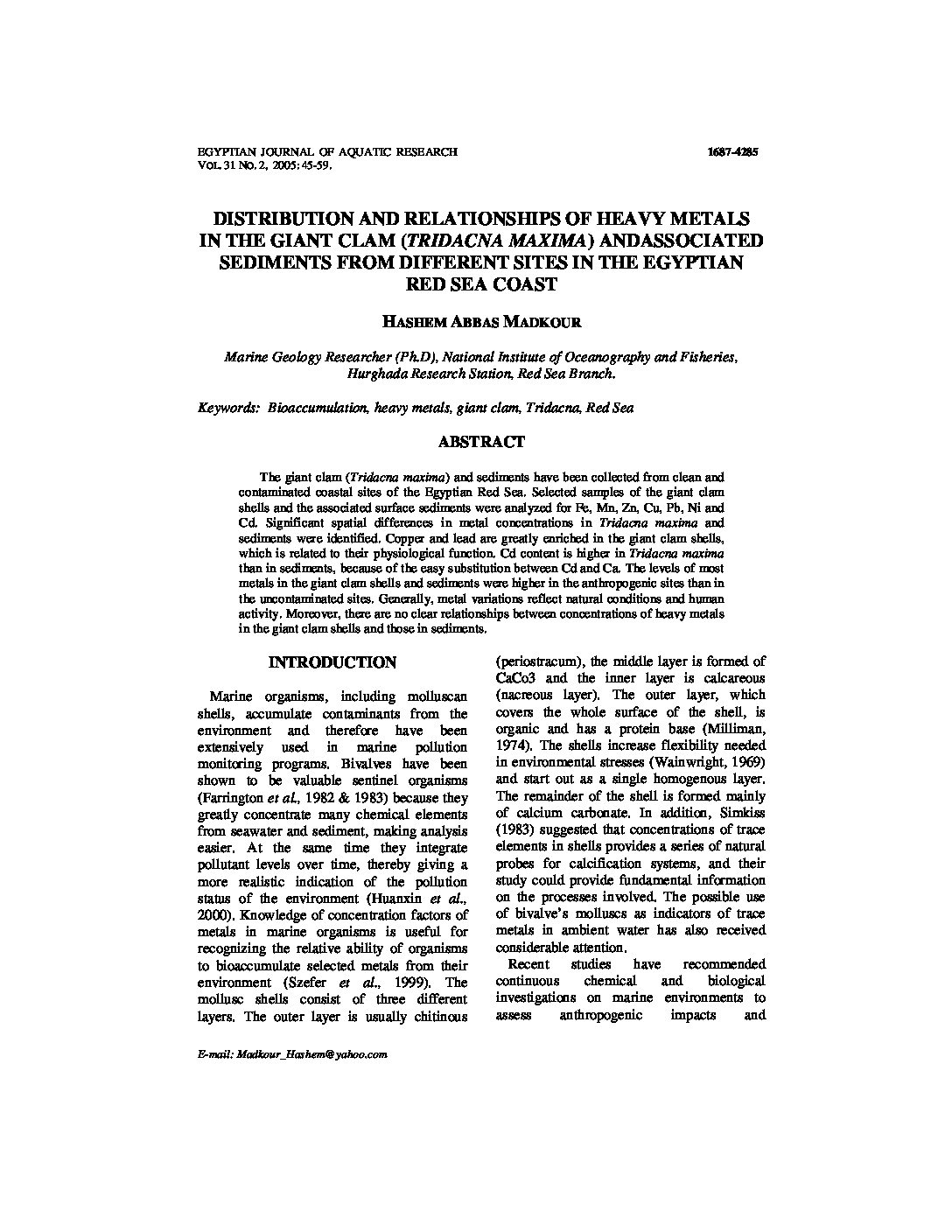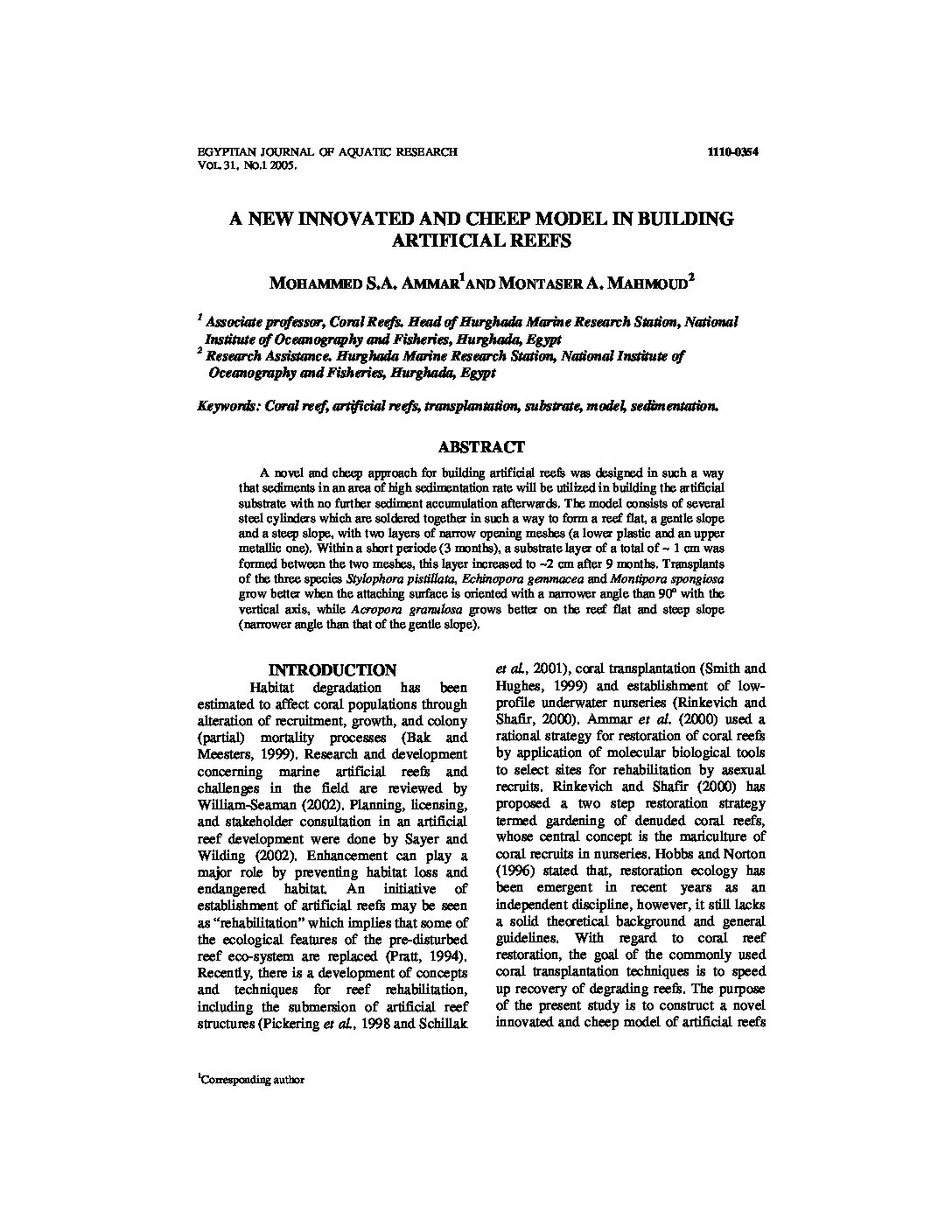Categories
vol-31DISTRIBUTION AND RELATIONSHIPS OF HEAVY METALS
IN THE GIANT CLAM (TRIDACNA MAXIMA) ANDASSOCIATED
SEDIMENTS FROM DIFFERENT SITES IN THE EGYPTIAN
RED SEA COAST
HASHEM ABBAS MADKOUR
Marine Geology Researcher (Ph.D), National Institute of Oceanography and Fisheries,
Hurghada Research Station, Red Sea Branch.
Keywords: Bioaccumulation, heavy metals, giant clam, Tridacna, Red Sea
ABSTRACT
The giant clam (Tridacna maxima) and sediments have been collected from clean and
contaminated coastal sites of the Egyptian Red Sea. Selected samples of the giant clam
shells and the associated surface sediments were analyzed for Fe, Mn, Zn, Cu, Pb, Ni and
Cd. Significant spatial differences in metal concentrations in Tridacna maxima and
sediments were identified. Copper and lead are greatly enriched in the giant clam shells,
which is related to their physiological function. Cd content is higher in Tridacna maxima
than in sediments, because of the easy substitution between Cd and Ca. The levels of most
metals in the giant clam shells and sediments were higher in the anthropogenic sites than in
the uncontaminated sites. Generally, metal variations reflect natural conditions and human
activity. Moreover, there are no clear relationships between concentrations of heavy metals
in the giant clam shells and those in sediments.







